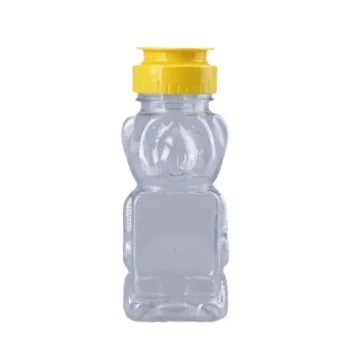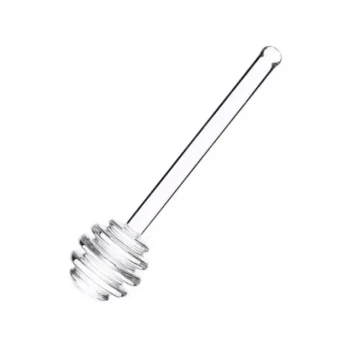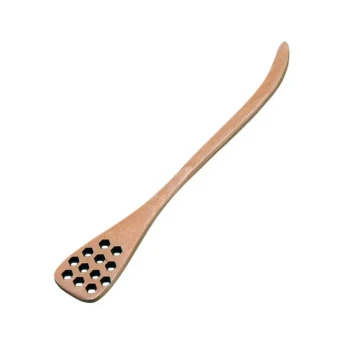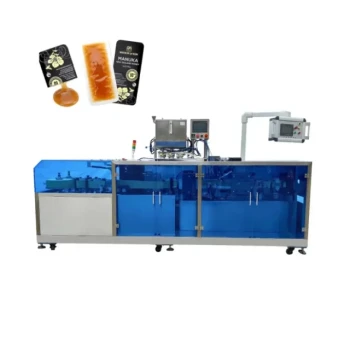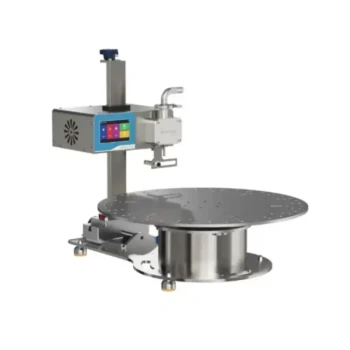As a general rule, honey should be allowed to settle for four to five days before bottling. This period allows the fine air bubbles and wax particles introduced during extraction to rise to the surface, resulting in crystal-clear honey in the final jar.
The primary goal of settling honey is not simply to wait, but to achieve clarity. The time required is a function of honey's viscosity, which is directly influenced by temperature—warmer honey settles significantly faster.
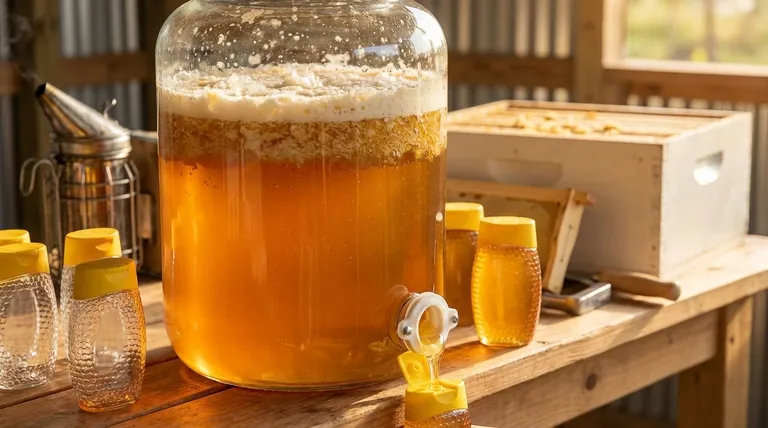
Why Settling is a Critical Step
After honey is spun from the comb in an extractor, it contains more than just pure honey. The settling process is a simple, gravity-based method of purification that dramatically improves the final product's quality and appearance.
Removing Air Bubbles
The centrifugal force of extraction and the process of pumping honey into a tank whip a significant amount of air into it. These tiny bubbles make the honey appear cloudy or foamy. Letting the honey rest undisturbed allows these bubbles to slowly travel to the surface.
Separating Fine Debris
Even after initial straining, microscopic particles of wax, propolis, and pollen can remain suspended in the honey. Like air bubbles, these particles are less dense than honey and will rise to the top over time, forming a distinct layer that can be skimmed off.
Achieving a Professional Appearance
Clear, brilliant honey is the benchmark for a high-quality product. Bottling cloudy or bubbly honey can be perceived as a sign of a low-quality or improperly handled product. Settling is the final step that ensures a professional, shelf-stable appearance.
Factors That Determine Settling Time
While four to five days is a reliable guideline, the actual time needed can vary. Understanding the key factors allows you to manage the process more effectively.
The Role of Temperature and Viscosity
This is the most important factor. Honey is viscous (thick), which slows the ascent of bubbles and debris. Warming the honey reduces its viscosity, dramatically speeding up the settling process.
Holding honey at a temperature of 80-95°F (27-35°C) can reduce the required settling time to just 24-48 hours. This can be achieved by placing the settling tank in a warm room or using a dedicated honey warming cabinet or belt.
The Initial State of the Honey
Honey that was processed more vigorously or is naturally frothier will have more incorporated air. It will require a longer settling period compared to honey that was handled more gently.
The Design of Your Settling Tank
A proper settling tank or bottling bucket is equipped with a "honey gate" or valve located several inches above the bottom. This design allows you to bottle the clear honey from below, leaving the foam and debris undisturbed at the top.
Understanding the Trade-offs
Patience is key, but there are practical limits and risks to consider when managing the settling process.
The Consequence of Rushing
If you bottle your honey too soon, before it has fully clarified, the air bubbles will remain trapped. Over time, these bubbles may coalesce or slowly rise in the jar, creating an undesirable appearance for the consumer.
The Risk of Overheating
While warmth is beneficial, excessive heat will damage your honey. Heating honey above 105°F (40°C) can destroy its delicate enzymes, aromas, and beneficial properties. The goal is to gently warm the honey, not cook it. Always use low, controlled heat.
How to Apply This to Your Project
The right approach depends on your timeline and equipment. After extracting and straining, transfer your honey to a bottling tank and let it rest.
- If your primary focus is simplicity: Let the honey settle at room temperature for 4-5 days, then skim the top layer before bottling from the honey gate.
- If your primary focus is speed: Gently warm the honey in its tank to 80-95°F (27-35°C) to reduce the settling time to 24-48 hours.
- If your primary focus is maximum clarity: Settle the honey for the recommended time (using warmth if desired), and then very carefully skim all foam and wax from the surface before you begin to bottle.
Ultimately, allowing honey the proper time to settle is a simple act of patience that pays dividends in the quality of your final product.
Summary Table:
| Factor | Impact on Settling Time | Recommendation |
|---|---|---|
| Temperature | Warmer honey (80-95°F / 27-35°C) settles faster. | Reduces time to 24-48 hours. Avoid overheating (>105°F / 40°C). |
| Initial Honey State | More air bubbles and debris require longer settling. | Handle honey gently during extraction to minimize froth. |
| Tank Design | A tank with a honey gate allows for clean bottling from the bottom. | Use a proper settling tank for optimal results. |
Ready to produce premium, crystal-clear honey efficiently? HONESTBEE supplies commercial apiaries and beekeeping equipment distributors with the high-quality settling tanks, honey warmers, and bottling equipment needed to streamline your operation. Our wholesale-focused solutions help you save time and enhance your product's market appeal. Contact our experts today to discuss your commercial beekeeping supply needs!
Visual Guide
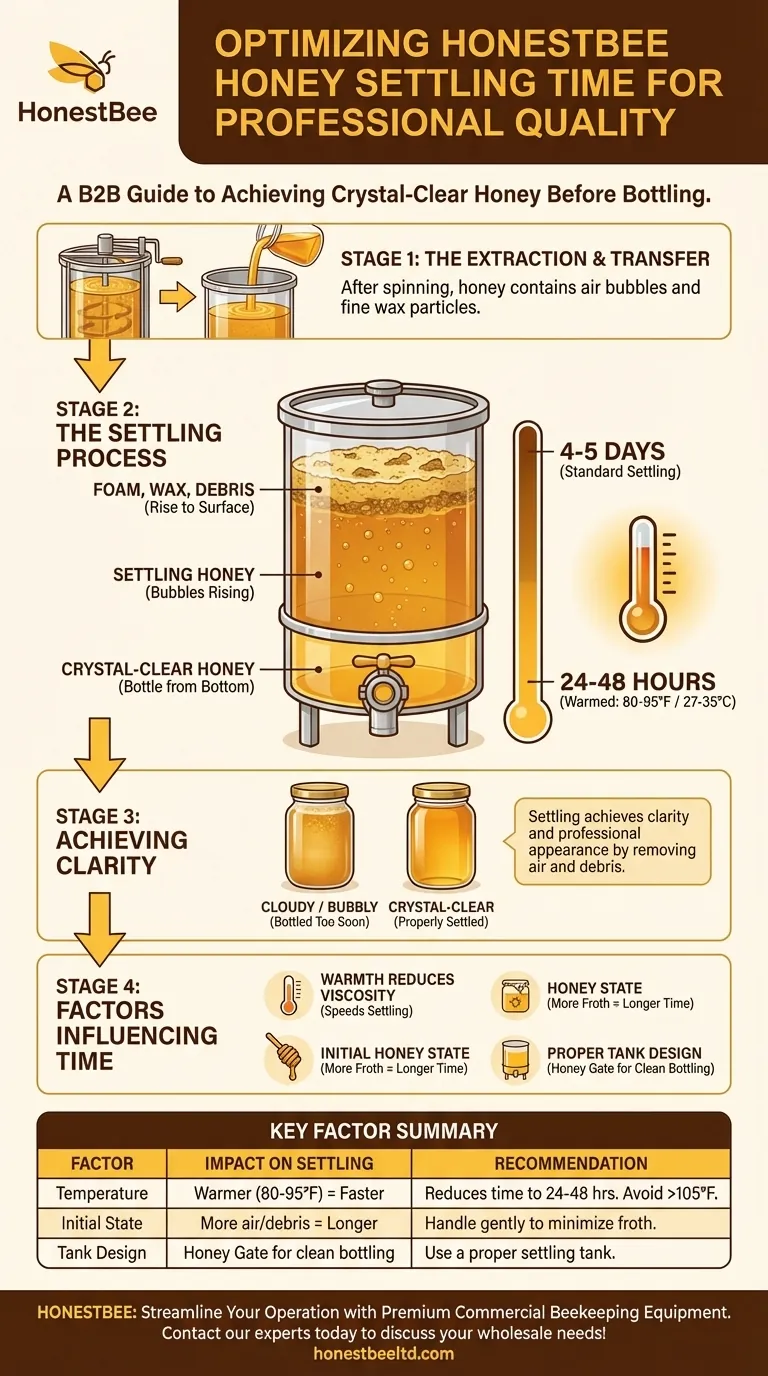
Related Products
- Inverted Squeezable Honey Jar with No Drip Flip Top Cap for Easy Pouring
- Classic Honey Bear Jars with Flip Top Dispensing Cap for Liquid Sweeteners
- Classic Drum Shaped Glass Honey Jar with Airtight Lid
- Pneumatic Double Nozzle Honey Filling Bottling Packaging Machine
- Premium Heat-Resistant Glass Honey Dipper
People Also Ask
- How should honey be stored and packaged? Preserve Flavor & Quality with Proper Containers
- What are the benefits of using glass jars for honey packaging? Preserve Flavor & Elevate Your Brand
- What factors should be considered when choosing honey packaging? Optimize for Brand, Operations & Market
- What is done with the honey after extraction and filtering? From Purification to Perfect Packaging
- How should honey bottles be prepared before pouring honey into them? The #1 Rule for Honey Longevity

